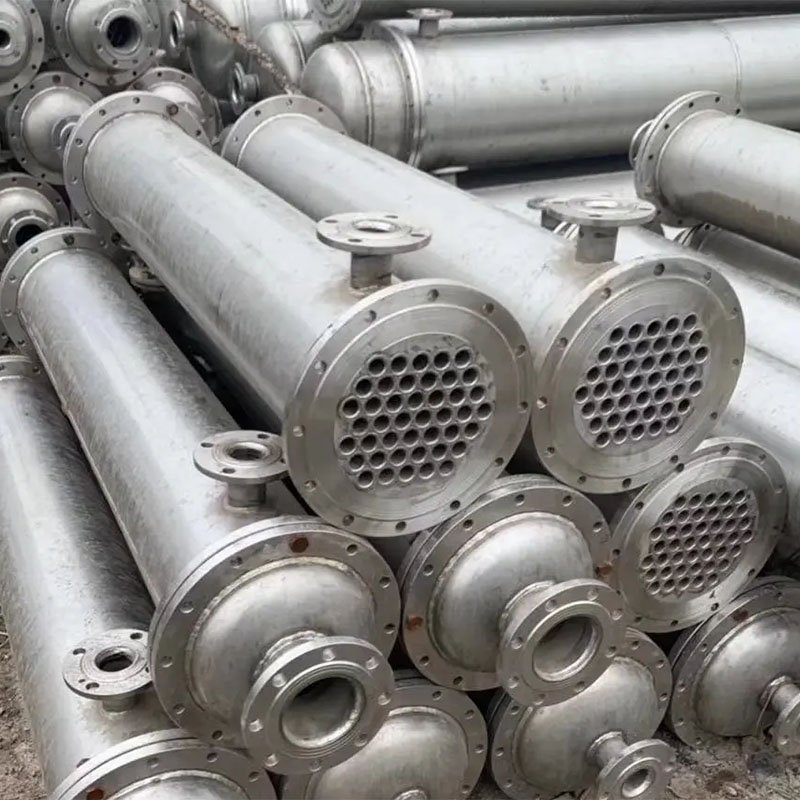
- English
- Español
- Português
- русский
- Français
- 日本語
- Deutsch
- tiếng Việt
- Italiano
- Nederlands
- ภาษาไทย
- Polski
- 한국어
- Svenska
- magyar
- Malay
- বাংলা ভাষার
- Dansk
- Suomi
- हिन्दी
- Pilipino
- Türkçe
- Gaeilge
- العربية
- Indonesia
- Norsk
- تمل
- český
- ελληνικά
- український
- Javanese
- فارسی
- தமிழ்
- తెలుగు
- नेपाली
- Burmese
- български
- ລາວ
- Latine
- Қазақша
- Euskal
- Azərbaycan
- Slovenský jazyk
- Македонски
- Lietuvos
- Eesti Keel
- Română
- Slovenski
- मराठी
- Srpski језик
What are the Structural Characteristics of the Vertical Shell And Tube Heat Exchanger?
2025-05-12
The structural characteristics of the vertical shell and tube heat exchanger are reflected in the orthogonal heat transfer path design of the tube side and shell side fluids. The cylindrical pressure vessel is bounded by the tube sheet to form a dual-medium isolation cavity. The tube bundle array is arranged in a straight line in the direction of gravity. The corrugated surface of the baffle guides the shell side fluid to form turbulence to enhance convective heat transfer. The sealing structure of the tube box and the shell flange connection adopts an asymmetric wedge-shaped gasket to form a composite sealing mechanism of axial preload and radial constraint.

The multi-point contact structure of the tube bundle support frame of the vertical shell and tube heat exchanger realizes uniform stress distribution under thermal expansion conditions and prevents micro-motion wear between the tube wall and the baffle. The guide cone at the shell side inlet reduces the risk of fluid erosion of the first row of pipes through velocity field reconstruction. The elastic deformation capacity of the U-shaped tube bundle compensates for the difference in material expansion caused by temperature difference, and the expansion joint between the tube sheet and the shell absorbs the thermal stress of the system. The core-removable tube bundle design of the vertical shell and tube heat exchanger allows the entire module to be displaced along the vertical axis, providing linear motion space for mechanical cleaning of the tube side.
The annular gap between the vertical shell and tube heat exchanger shells is filled with an inert gas buffer layer to block the cross-contamination path when the medium leaks. The tube box partition optimizes the flow channel division ratio according to the logarithmic mean temperature difference to improve the countercurrent heat transfer efficiency. The curvature of the anti-impact baffle is verified by computational fluid dynamics to effectively eliminate the boundary layer separation phenomenon of the shell side fluid. This structural paradigm simplifies the discharge process of high-viscosity media through the gravity self-draining characteristics, and uses the density difference to achieve natural stratification of gas-liquid two-phase flow.



